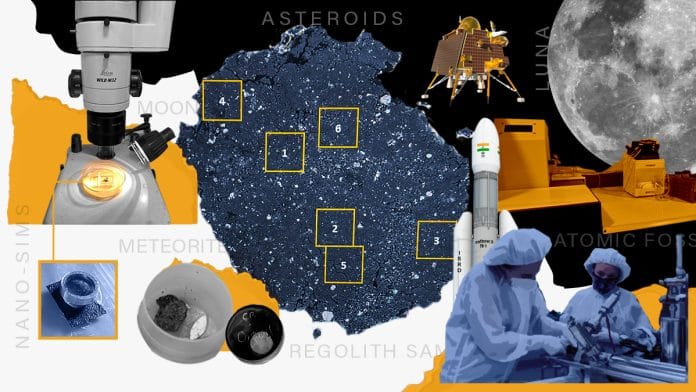Ahmedabad: At the far end of a well-lit, wide corridor, inside a traditional post-Independence minimalist academic building in Ahmedabad, is a lab that houses some of the rarest substances on Earth — lunar rocks collected by humans who walked on the moon and soil samples from asteroids beyond Mars, brought by sophisticated robots.
Scientists at the Physical Research Laboratory (PRL) are using some of the most precise nanoscale instruments in the world to study elements and their isotopes. It’s the only other Indian institute, apart from TIFR Mumbai, to work with lunar samples. Both main labs of PRL — NanoSIMS lab and the Ex-terra lab — are collaborating with global researchers from space agencies like America’s NASA, Russia’s Roscosmos, and Japan’s JAXA.
This research is also a kind of planning for the next major domestic boost to science — Chandrayaan-4, ISRO’s upcoming lunar mission. It is a sample-return mission, and PRL labs will be the ones analysing most of the moon dust collected by Indian robots for the first time.
By volume, asteroid and lunar materials on Earth are not exactly rare. They are scattered all over the planet as evidence of its violent origin. Nevertheless, they are extremely valuable to science as one of the first extraterrestrial materials purposely brought to Earth to be studied by scientists.
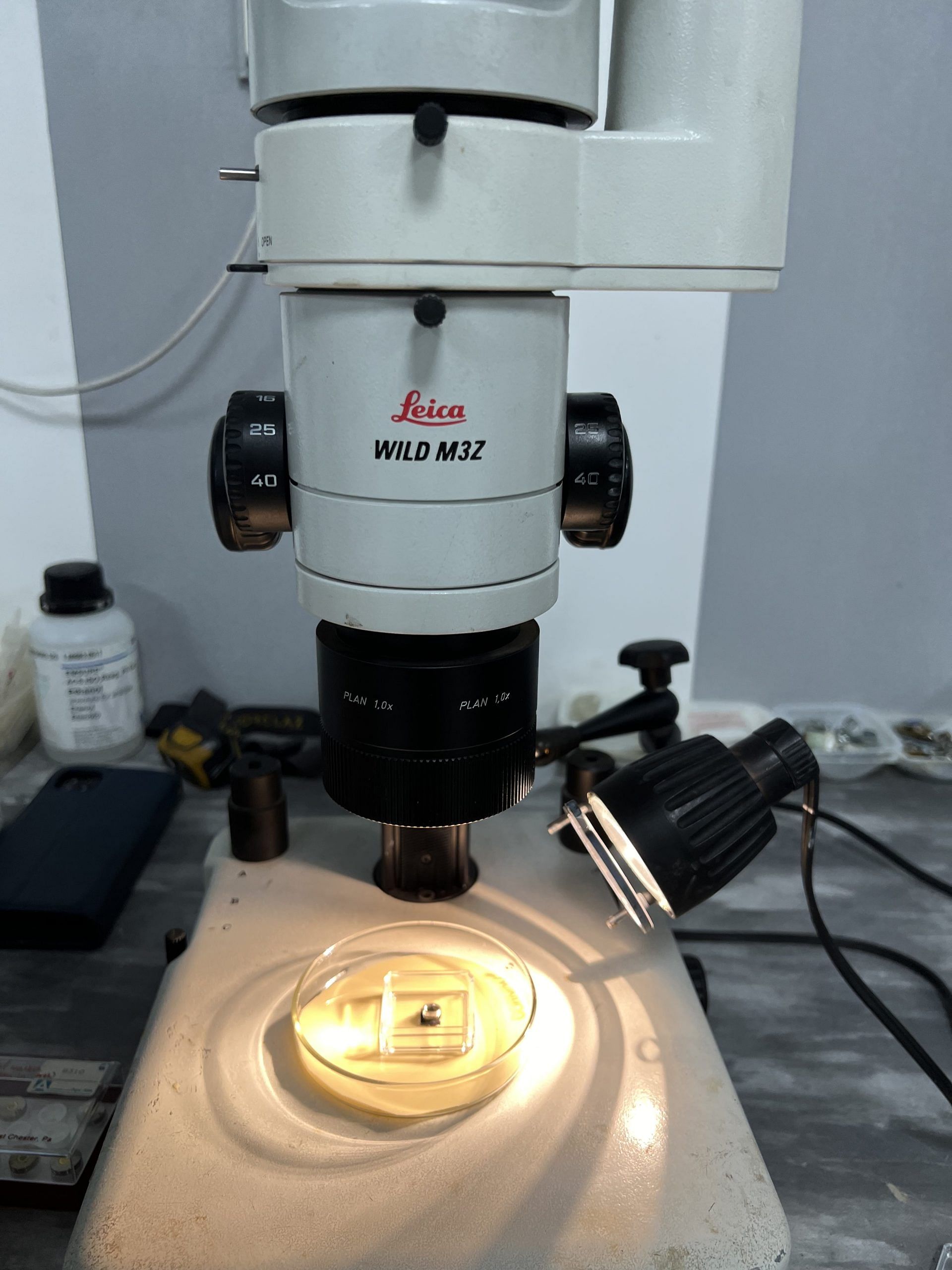
The teams at PRL are trying to understand the elemental and isotopic composition of these extraterrestrial samples — what atoms and molecules are present in them, when they formed, and how they came to be. Their work dives deep into understanding Earth’s formation and, ultimately, how life began on the planet.
“The motto in 2015-16 was to bring India [on] par with the international research community on volatiles, and we began with understanding water content in lunar samples,” said Dr Kuljeet Kaur Marhas, head of the Planetary Laboratory Analysis Section at PRL’s Planetary Sciences Division.
“The projects we run here are focused on meteorites and sample returns and have a legacy of working on them. In the last few years, we have also started studying organics for understanding their formation and alterations they went through.”
The NanoSIMS and Ex-terra labs are located deep inside the Navrangpura campus of PRL, next to the original building where founder Vikram Sarabhai’s office is preserved. The entire campus is a homage to Sarabhai
India’s cradle of space science
Samples from the moon come in the form of large rocks, chunky mounds of lunar soil or regolith, and, more typically, flaky, grey powder. The team here has both the rocky and the powdery versions, stored in small vials, each holding a mere pinch of the substance. The scientists hold them against their palms or white paper for contrast, and everyone hunches over to observe them up close. The clumpy, dark, talcum powder-like moon surface material is better viewed under microscopes, placed on tables lining the two labs.
The NanoSIMS and Ex-terra labs are located deep inside the Navrangpura campus of PRL, next to the original building where founder Vikram Sarabhai’s office is preserved. The entire campus is a homage to Sarabhai, building on his enduring legacy and spirit, evident in both the expansions of the buildings and the research in his intended direction.
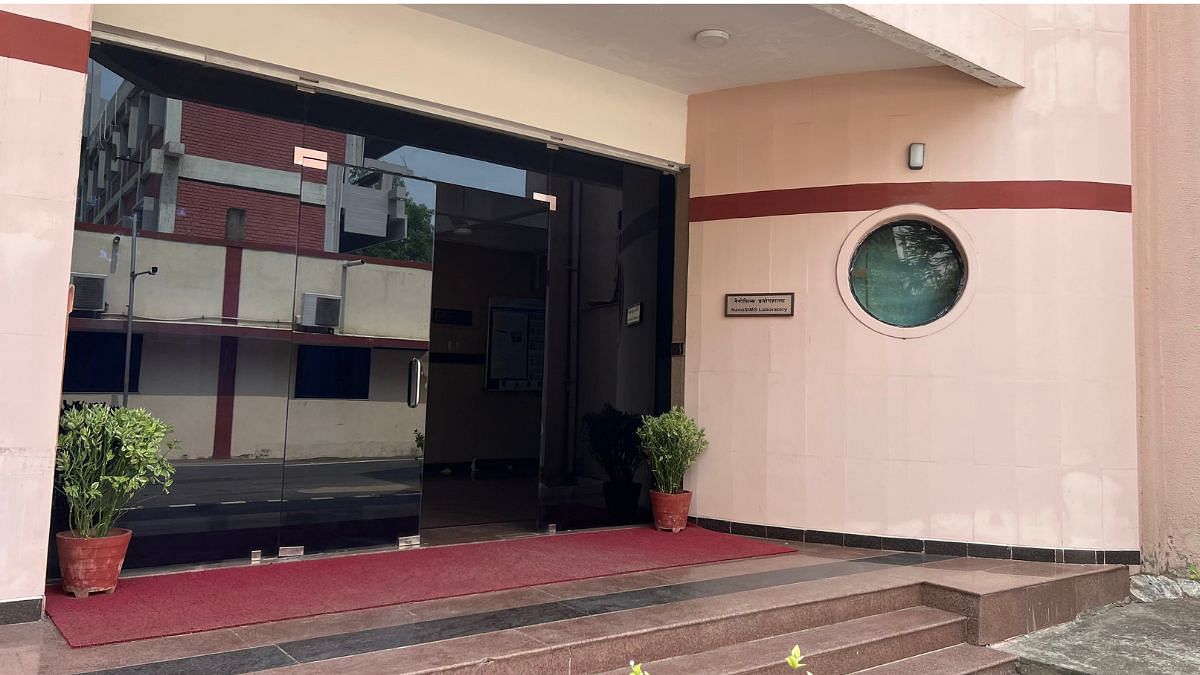
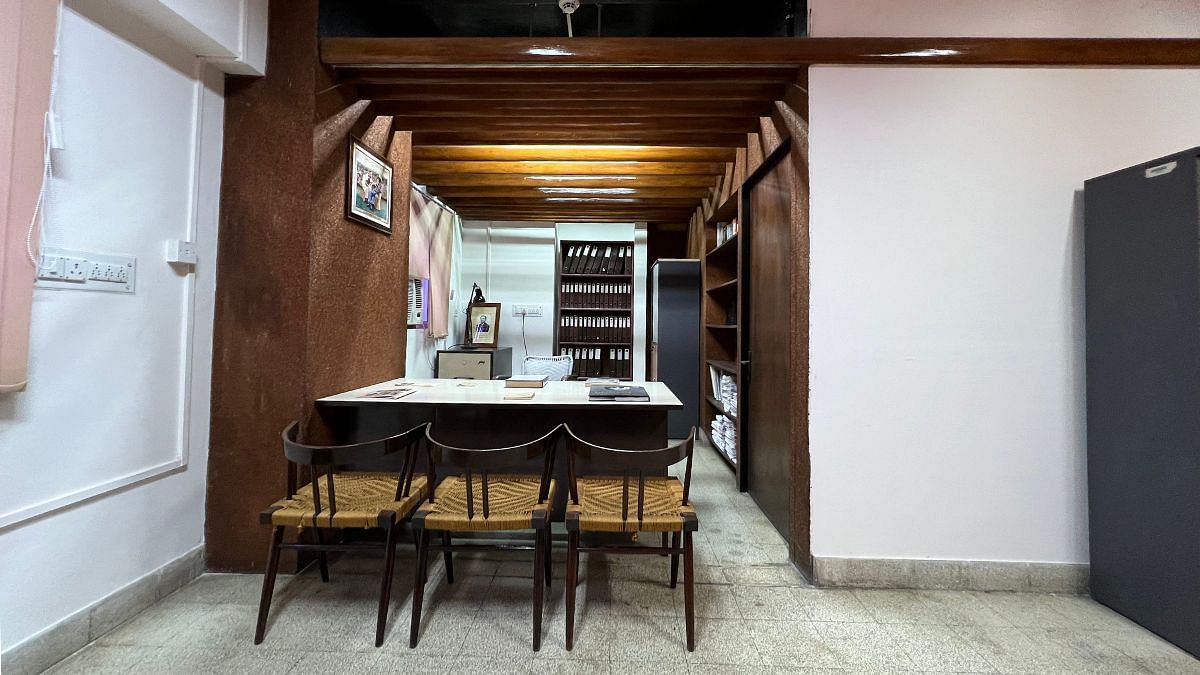
“Today, ISRO carries on his legacy, and PRL has been working with space agencies and institutes across the world in all domains of sciences. Our collaborations are bilateral, where both partners benefit and have expertise the other doesn’t,” explained astrophysicist Anil Bhardwaj, director of PRL.
The original building, where space sciences in India was conceptualised, is almost a museum, with Sarabhai’s original office, including his desk, bookshelves, furniture, and even glasses, on display. A giant mural of his face made of keyboards and discarded electronic waste adorns the atrium at the entrance.
Today, ISRO carries on his legacy, and PRL has been working with space agencies and institutes across the world in all domains of sciences. Our collaborations are bilateral, where both partners benefit and have expertise the other doesn’t
— Anil Bhardwaj, astrophysicist and director of PRL
Separated from the old building by a small pond with turtles and marine plants, and a large pi symbol, are the institute’s research buildings housing the labs. The walls of the NanoSIMS lab corridor are lined with infographics and posters about stellar nucleosynthesis — how elements form in stars, dust in the early solar system, Earth’s geology, solar system’s rocks, meteorites, and the planets.
Just before entering the lab, a display case of samples grabs attention. It features meteorites of various shapes illuminated from different angles, with labelled descriptions and a map with locations where they were found in the country. These items, including tiny vials of lunar samples from the American Apollo and Russian Luna missions, are to be handled with gloves only.
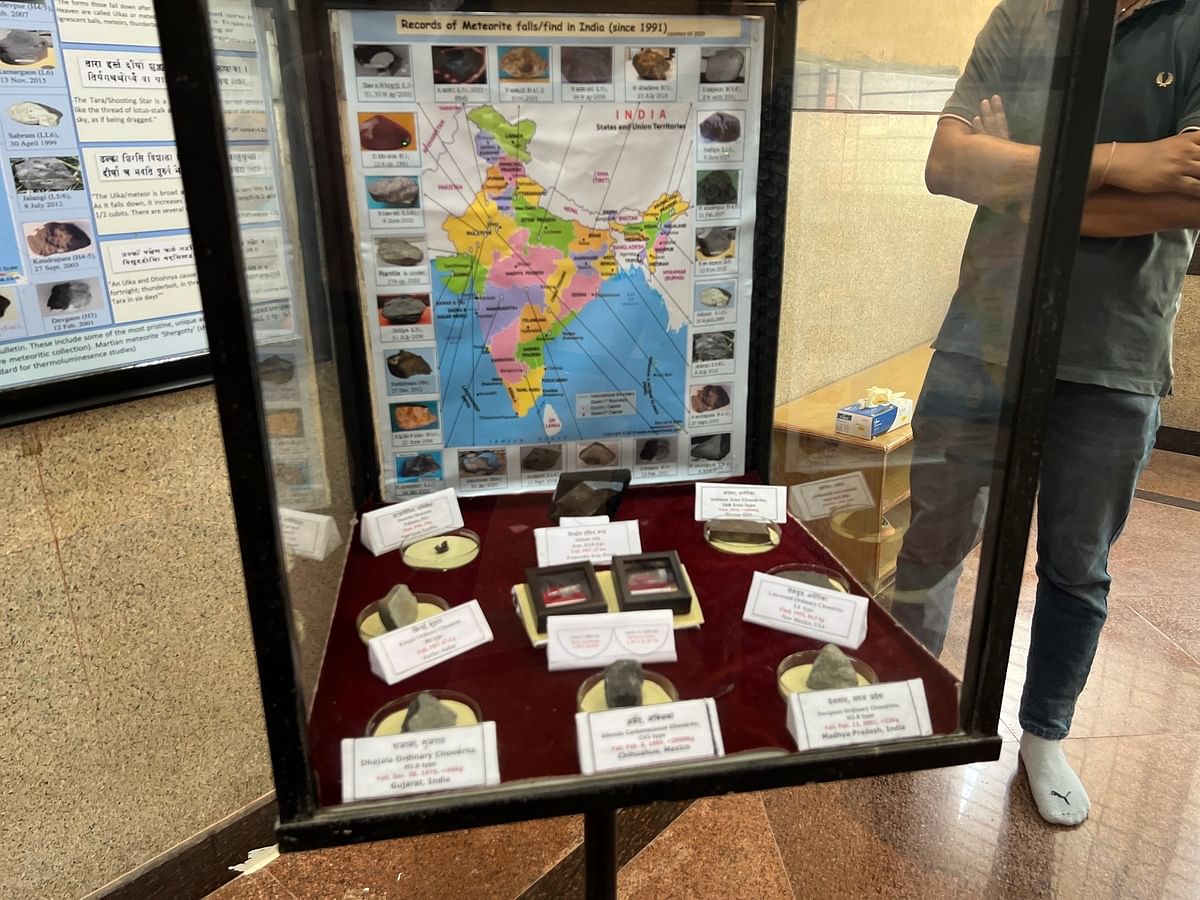
Marhas’ team picks some of them out. An “ordinary” meteorite sample looks like a triangular piece sliced off the corner of a rock — grey with texture and shine on the inside and charred jet black on the outside. A carbonaceous meteorite is irregularly grey and black, speckled with white dots of calcium and aluminium. A metallic meteorite looks like a slim slab of black rock, laced with shiny metal inclusions. The iron meteorites are the most interesting to the team — shiny iron-grey slabs with fully rusted insides. All these were recovered from Earth but originated in the Main Asteroid Belt, between Mars and Jupiter.
“We cut the rock, polish it, place it in epoxy, and then analyse it,” said Marhas.
While these rocks are large chunks, the moon and asteroid samples are stored in extremely tiny transparent cases — a reminder of how scarce extraterrestrial research samples are and how many are spread out across the globe.
Apollo mission samples were collected by the first humans to walk on the moon between 1969 and 1972, over six missions, with two men setting foot on the lunar surface each time. Using shovels designed to collect the sticky, staticky, and dusty lunar soil, called regolith, they brought back 382 kg of lunar material from six sites in 2,200 individual samples. Between 1970 and 1976, the Soviet Union’s robotic and fully-automatic landers — Luna 16, Luna 20, Luna 24 — brought back over 320 gm of regolith samples.
Some of PRL’s Apollo samples show tiny, solid rocks from the moon, while Luna samples are powdery. Each is unique for its composition, the location from which it was collected, and the history it reveals about past geological events on the moon.
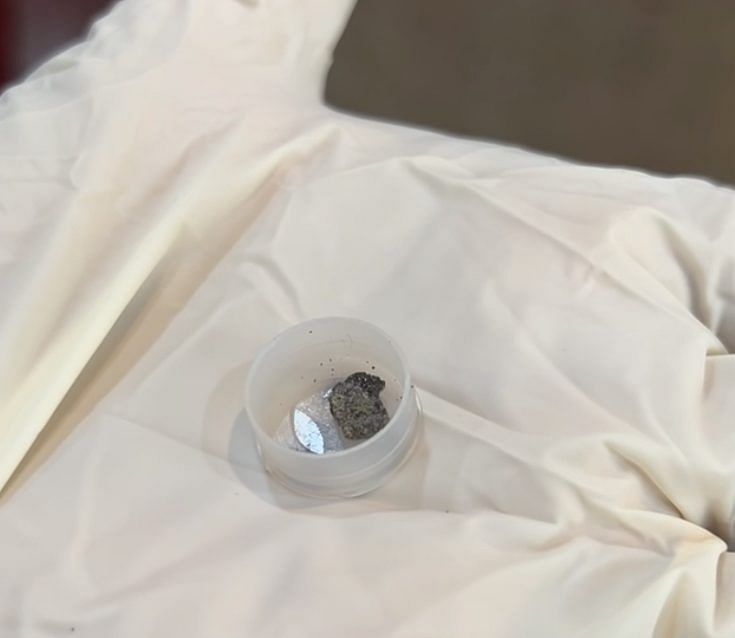
These samples are both given out to research institutions worldwide in collaborative research projects and kept on display in museums. India received its first 100 gm in the 1970s, along with samples from the former Soviet Union’s Luna missions, some of which are stored at PRL. These were used for high–energy physics studies at TIFR, Mumbai.
Apollo mission samples were collected by the first humans to walk on the moon between 1969 and 1972. They brought back 382 kg of lunar material from six sites in 2,200 individual samples. Between 1970 and 1976, the Soviet Union’s robotic and fully-automatic landers — Luna 16, Luna 20, Luna 24 — brought back over 320 gm of regolith samples.
While PRL sends out teams to collect meteorite samples in the country, it receives international samples just like any other institute — by writing a proposal and requesting them. The prompt granting of Japan’s two different asteroid samples and two different countries’ lunar samples is a testament to the expertise and results of sample analyses performed here, along with meteorite studies, said Anil Bhardwaj.
Also read: Alternative landing site for Chandrayaan-3 on Moon has potential for future lunar experiments
Breaking down space rocks
The NanoSIMS lab currently contains samples from asteroids Itokawa and Ryugu collected during Japan’s Hayabusa 1 and 2 missions, respectively. It also has lunar samples from NASA’s Apollo and Russia’s Luna missions, as well as giant or unusual meteorites from Earth. The team hopes to soon receive recently retrieved samples from the asteroid Bennu from NASA’s OSIRIS-REx mission.
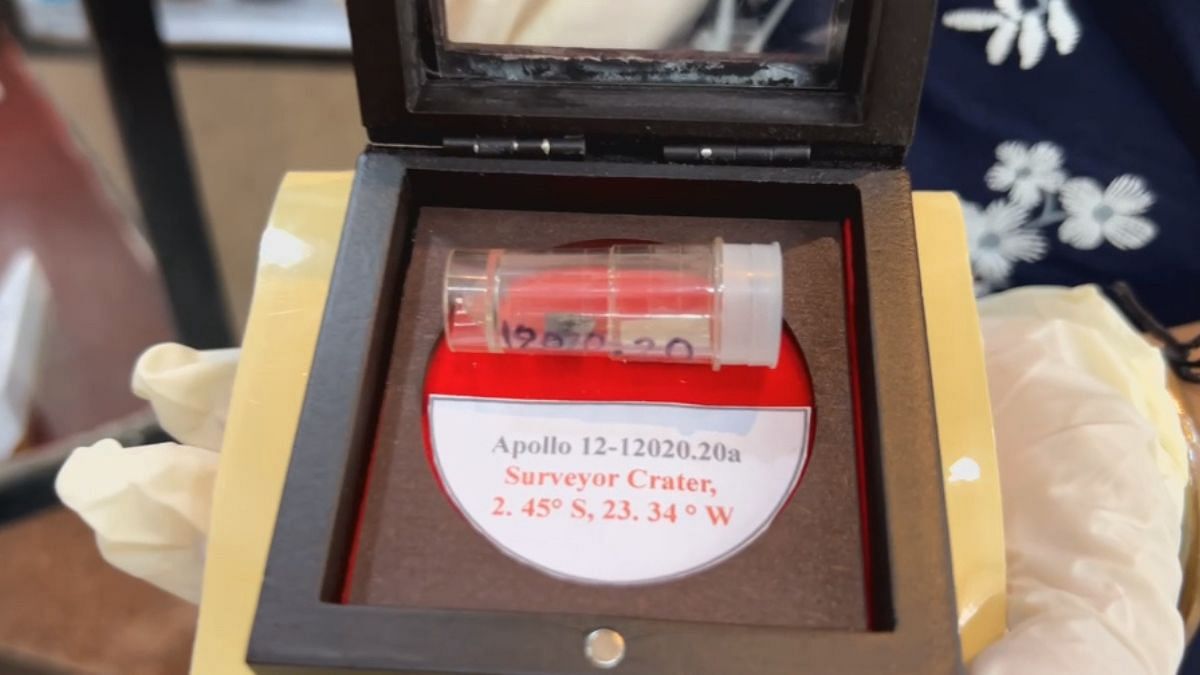
Space rocks and meteorites are studied at NanoSIMS, which is named after its crown jewel instrument, the Nano-Secondary Ion Mass Spectrometer. Analysis of these materials reveals their age and the processes they underwent during their formation, shedding light on the history of Earth as well. This research is complemented by work at the Ex-terra lab, a short walk away, which hosts a different kind of spectrometer.
The scientists put on surgical gloves and prepare samples for observation. Marhas shows a prepared slide. “We pick up bits of material we want to study, either under a microscope or with the naked eye. We then use double-sided tape for mounting,” she said. The sample, contained in a closed Petri dish, is then placed into the spectrometer’s intake chute.
Studying rock samples involves fundamental chemistry, tracing back to the formation of the solar system and the primordial gases. When the dust and matter cloud that formed the solar system collapsed, it started to rotate, concentrating the densest matter at the centre to form the sun, followed by the planets.
We look at a few million years of the sun’s formation, how it varied in activity from angry to passive
— Dr Kuljeet Kaur Marhas, head, Planetary Laboratory Analysis Section, PRL
Understanding the interactions during this time involves isotopic and elemental analyses of samples frozen in time since formation, such as those from asteroids and comets.

Yogita Kadlag, assistant professor at the Geosciences division, explains the powerful spectrometer in the Ex-terra lab. Shaped like a hockey stick with corners when viewed from the top, it spans most of the room. Kadlag points to how plasma flows and large magnets guide light beams inside the machine, which features metallic cylinders connected by metal tubes and large encased containers with magnets.
“The different masses are isolated and collected from different detectors, and then we measure the isotopes,” Kadlag said, pointing to the cylinders.
A mass spectrometer calculates the mass and charge of various ions in any material, separating charged particles with different masses to identify isotopes of various elements. The machine, operational since 2007, analyses changes occurring at a nanometer scale, using beams of light for its calculations. Electric and magnetic fields are used in the process, and it spits out data about the elements in the sample.
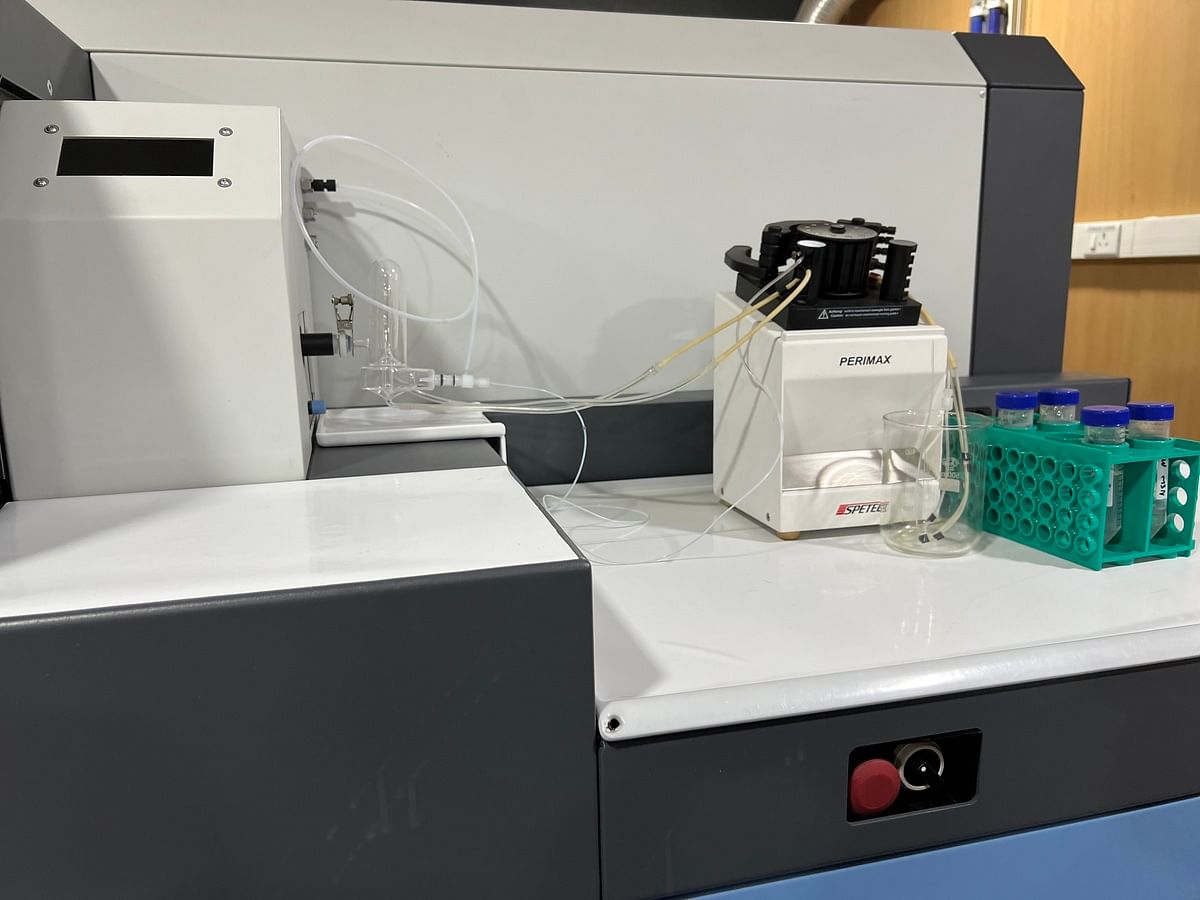
With this data, the team can determine characteristics such as whether a lunar sample’s source rock was rich in water — important for life, habitability, and human settlements — or if an asteroid sample had more aluminium or magnesium, indicating where in the early solar system it formed.
These elements and isotopes also provide information about the sun’s past energy levels, as material ejected from the sun interacted violently with the environment. One of the team’s discoveries was that Beryllium, with atomic number 4, entered the solar system due to a “super flare” from the sun, an intense burst of hot plasma and charged particles that reacted with dust and elements.
Most interestingly, these labs can date rocks that existed even before the sun formed.
The lab aims to analyse these atomic fossils to determine whether the proto-molecular cloud that formed the solar system collapsed under its own mass and gravity or was triggered by an external mechanism or reaction — a question that goes back to the roots of all existence on Earth.
These pre-solar grains were clumps of material that existed in the matter that formed the sun and the solar system but did not get incorporated into the sun or any other object. Arguably more valuable than other samples, these special grains receive special treatment. The team is studying them in Ryugu samples.
“These pre-solar grains are studied at micro- and nano-scales, but they absolutely cannot be physically or chemically treated the way we prepare other samples. We just disperse them on a gold foil with an inert magic solution that spreads the grains apart,” explained Marhas.
Also read: Mount Abu observatory is India’s eye on the sky. It’s hunting for Earth’s distant cousins
Understanding the big from the small
At the NanoSIMS lab, the team is both relaxed and excited about their cutting-edge work. Marhas explained that the essence of all their work is to drill down to the composition of materials at the nanoscale, examining atoms and molecules. The team is currently focused on studying volatiles and organics.
Understanding volatiles—elements that vaporise immediately, as used in perfumes—and organics—carbon-based molecules associated with life—goes hand-in-hand, and they often accompany water. This is particularly crucial for NanoSIMS because, unlike Apollo samples collected from the dry equatorial region, Indian missions will land at the water-rich South Pole.
Another important subject of research at the lab is short–lived radionuclides (SLR). These are radioactive elements like 41-Calcium and 10-Beryllium that existed naturally in the first few million years after the solar system formed and left imprints in asteroids and rocks.
Understanding volatiles—elements that vaporise immediately, as used in perfumes—and organics—carbon-based molecules associated with life—goes hand-in-hand, and they often accompany water. This is particularly crucial for NanoSIMS because, unlike Apollo samples collected from the dry equatorial region, Indian missions will land at the water-rich South Pole.
The lab aims to analyse these atomic fossils to determine whether the proto-molecular cloud that formed the solar system collapsed under its own mass and gravity or was triggered by an external mechanism or reaction — a question that goes back to the roots of all existence on Earth.
“We look at a few million years of the sun’s formation, how it varied in activity from angry to passive,” explained Marhas, whose team is currently hunting for pre-solar grains in Ryugu samples.
The lab’s analyses extend beyond just rocks and the solar system. Studying elements and their natural formation involves studying other stars and how elements form within them, outside our solar system. For example, the team also examines the expulsion of material from a star during a supernova and how this material interacts with the different onion-like shells of the explosion.
In the next building, at the Ex-terra lab, the multiple collector inductively coupled plasma mass spectrometer (multi-collector ICP-MS) performs similar spectroscopy work but uses plasma and ionised samples instead of the solid grains fed into the NanoSIMS machine. It is nearly three times as large and moves ions in various directions through the machine. This is especially useful for analysing changes that Earth’s rocks have undergone since formation.
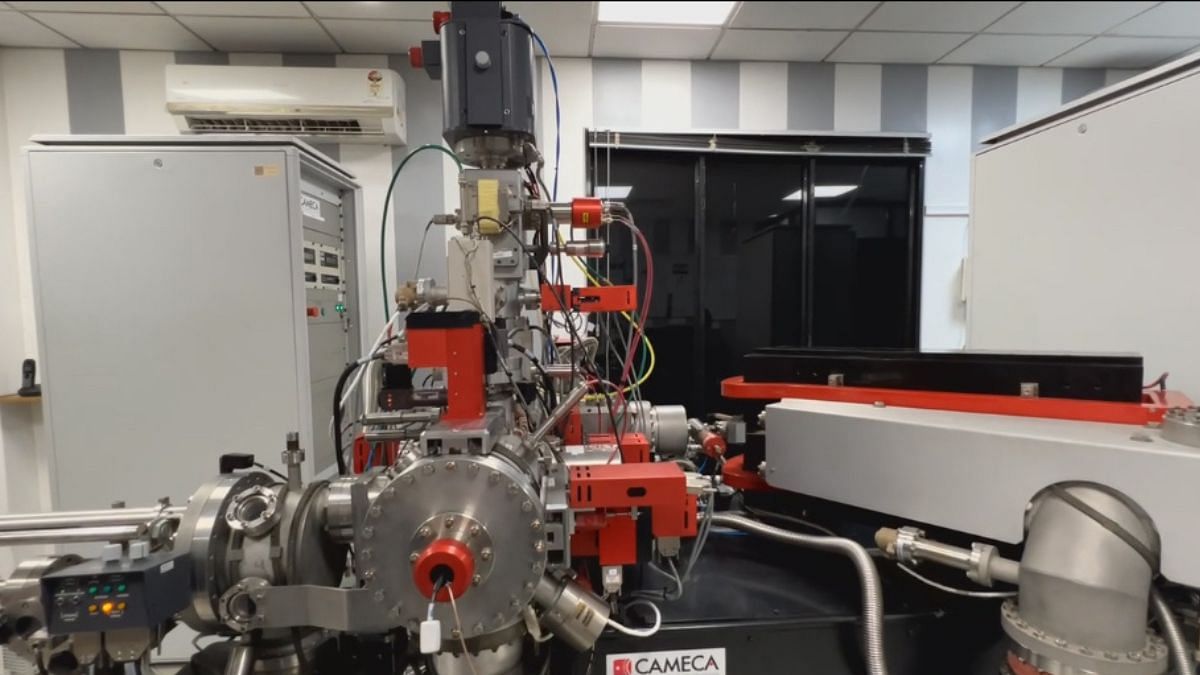
“Radioactivity is a phenomenon in which unstable isotopes of any element decay to a stable daughter isotope. When Earth formed, these parent isotopes were already embedded, and the decaying clock began. So measuring the amount of daughter isotopes acts as a chronometer and helps calculate the age of the rock or planetary sample,” explained Kadlag. On her desk are slices of striped rock samples in Ziplock bags, showing samples of banded iron formations recovered from different parts of the country.
Radioactive isotopes determine the age of any sample, while stable isotopes provide data about its genesis. The ICP-MS machine here can calculate precision levels to an extent of 10 parts per million, making it one of the most precise mass spectrometers in the world.
The future through the past
Understanding astronomical objects requires going back to the smallest of scales we can study, employing precise and expensive instruments. Today, there are not just astronomers and astrophysicists at PRL but also astrochemists, astrobiologists, theoretical physicists, high-energy physics students, solar physics, planetary science, and experts in quantum communication. The faculty takes pride in noting that many path-breaking pioneers of basic space sciences across India have trained at PRL at some point.
Students and researchers travel the world, obtaining samples, observing processes, and collaborating with researchers globally. Other labs in the institute supplement the work done by the NanoSIMS and Ex-terra labs, contributing to the understanding of geological and biological evolution on planetary scales.
In the stable isotopes lab, research expands to biogeochemistry and climate science, focusing on water bodies across the country and the carbon cycle associated with them. The climate work involves calculating processes that predict the planet’s future using the same analytical processes that recreate its past. A group of students is currently in the Arabian Sea, studying how carbon dioxide is absorbed into oceanic water due to phytoplankton.
“What is unique is that most facilities needed for such interdisciplinary work are under one roof, which isn’t even the case abroad,” said Prof Sanjeev Kumar, head of PRL’s Geosciences Division.
In the Thaltej campus in Ahmedabad, home to various urban wildlife species including majestic peacocks, sits PRL’s 1 MeV Accelerator Mass Spectrometer. This supercooled, basketball court-sized device is a highly sensitive instrument that can detect long-lived radioisotopes and is used to date geological material.
Bhardwaj explained that PRL focuses on three broad areas and will continue to do so in the foreseeable future: analysing samples and performing isotopic dating to calculate the age of any geological and astronomical object, luminescence dating (dating grains of sand to help calculate the ages of archaeological remains), and helping design instruments for ISRO’s space missions.
And now, everyone at Ahmedabad’s moon lab is holding their breath for the most-awaited sample to land.
“India is now targeting a sample return from the moon. Since we are well-equipped to analyse samples from anywhere today, we are also providing inputs to ISRO about where they can land and collect samples from unexplored locations,” said Bhardwaj.
(Edited by Aamaan Alam Khan)



